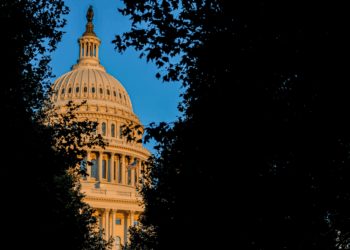Following the end of World War II in 1945, a defeated Germany was divided into four occupation zones, controlled by the Allied powers: the United States, France, Great Britain and the Soviet Union.
In 1949, two states emerged: the democratic in the West, and the socialist in the East, with the latter being under Soviet control. From that point on, Germany was divided.
Citizens of East Germany were only allowed to travel to the West under strict conditions. The GDR’s borders were heavily guarded, and a massive wall was built around West Berlin, which belonged to the FRG, to prevent GDR citizens from leaving their country.
How did Germany’s reunification come about?
People in the GDR lived under a surveillance state, deprived of freedom of expression. Those who failed to follow the socialist regime’s line faced persecution and imprisonment.
By the late 1980s, the population was increasingly rising up against the government. Citizens longed for the freedom and democracy their neighbors in the Federal Republic of Germany enjoyed.
Meanwhile, in the Soviet Union, Mikhail Gorbachev’s policies of reform were providing encouragement. Unlike his predecessors, Gorbachev refrained from using military force to suppress protest movements in the GDR and other Eastern Bloc countries.
In 1989, a wave of peaceful demonstrations swept across East German cities, eventually leading to the fall of the . This cleared the way for .
Why is October 3 German Unity Day?
The opening of the Berlin Wall on November 9, 1989, was the turning point for the path towards reunification.
Celebrating German Unity on that day might seem like the obvious choice.
But that particular date is more mired in tragedy than almost any other in German history. On the night of November 9 – 10, 1938, the Nazis burned down synagogues throughout Germany, destroyed Jewish businesses and homes, and murdered and arrested Jewish people. The “Reichspogromnacht” — also known as the and previously referred to as “Kristallnacht” — marked the beginning of the systematic persecution and mass murder of the Jews.
Because of that, overshadowing remembrance of that night by celebrating reunification was out of the question. October 3 was chosen for the new national holiday instead. On this day in 1990, reunification was formally completed, as it was date the GDR officially merged with the Federal Republic of Germany.
How do Germans celebrate Unity Day?
The answer is: quite quietly. Those expecting fireworks and streets decked out in national colors could be disappointed. Nonetheless, almost every city hosts events, open houses and smaller celebrations.
In addition, each year on October 3 one of the federal states organizes a larger, official festival — typically in its state capital. The responsibility for hosting that falls to whichever state is currently chair of the Bundesrat — Germany’s upper house of parliament.
This year marks ‘s turn. In the capital, Saarbrücken, the official program runs from October 2 to October 4 and promises “entertainment, art and culture, culinary specialties and tourism, and democratic exchange.”
Most Germans, though, are simply happy to enjoy a day off.
Why is there no monument to reunification?
There was, in fact, supposed to be one long ago. Following almost 10 years of debate, on November 9, 2007, Germany’s parliament — the Bundestag — decided to erect a “.”
The idea was to install a 50-meter-long, walkable structure in front of the Humboldt Forum, in the center of Berlin. It was to be an interactive metaphor for democracy: When people stepped onto it, the platform would tilt in the direction the majority moved.
As of 2025, the monument has yet to materialize. Disputes between the companies commissioned to deliver it and the responsible government institutions have delayed construction. Whether and when a solution will be found remains uncertain. The pedestal for it, at least, is already in place.
Is today’s Germany truly united?
Despite political efforts, a recent poll by German marketing institute Forsa indicates that Germany has yet to fully overcome its division.
Currently, only 35% of respondents say that East and West have “largely grown together.” The respondents’ different perceptions seem to confirm the divide: In the East, only 23% believe that Germans have become one people since 1990, compared to 37% in the West.
The sense of belonging reached its highest point in 2019, when 51% agreed that the two former countries had basically become one. When asked by the Infratest dimap political research institute what was still missing for successful reunification, the most frequent response by far — at 50% — was the equalization of wages, pensions and wealth.
This article was originally written in German.
The post 5 facts about German Unity Day appeared first on Deutsche Welle.




